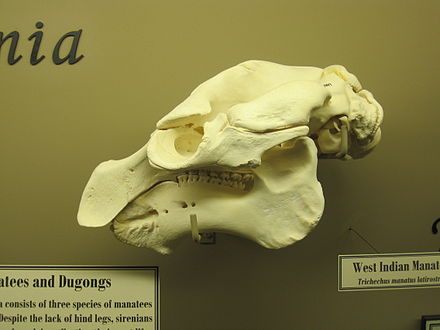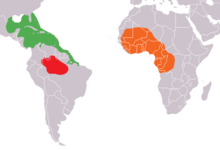Manatee
Manatees (family Trichechidae, genus Trichechus) are large, fully aquatic, mostly herbivorous marine mammals sometimes known as sea cows. There are three accepted living species of Trichechidae, representing three of the four living species in the order Sirenia: the Amazonian manatee (Trichechus inunguis), the West Indian manatee (Trichechus manatus), and the West African manatee (Trichechus senegalensis). They measure up to 4.0 metres (13 ft 1 in) long, weigh as much as 590 kilograms (1,300 lb),[2] and have paddle-like flippers.
Manatees are herbivores and eat over 60 different freshwater and saltwater plants. Manatees inhabit the shallow, marshy coastal areas and rivers of the Caribbean Sea, the Gulf of Mexico, the Amazon basin, and West Africa.
The main causes of death for manatees are human-related issues, such as habitat destruction and human objects. Their slow-moving, curious nature has led to violent collisions with propeller-driven boats and ships. Some manatees have been found with over 50 scars on them from propeller blades. Natural causes of death include adverse temperatures, predation by crocodiles on young,[3] and disease.
The etymology of the name is unclear, with connections having been made to Latin manus "hand" and to pre-Columbian Taíno manati "breast".[4] The term sea cow is a reference to the species' slow, peaceful, herbivorous nature, reminiscent of that of bovines.[5]
Manatees are three of the four living species in the order Sirenia. The fourth is the Eastern Hemisphere's dugong. The Sirenia are thought to have evolved from four-legged land mammals more than 60 million years ago, with the closest living relatives being the Proboscidea (elephants) and Hyracoidea (hyraxes).[6]
The Amazonian's hair color is brownish gray, and it has thick wrinkled skin, often with coarse hair, or "whiskers". Photos are rare; although very little is known about this species, scientists think it is similar to West Indian manatee.


_(7636816484).jpg/440px-Endangered_Florida_manatee_(Trichechus_manatus)_(7636816484).jpg)


